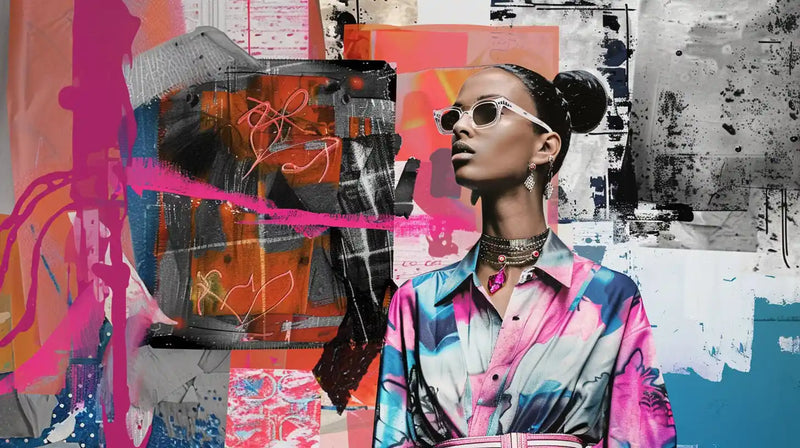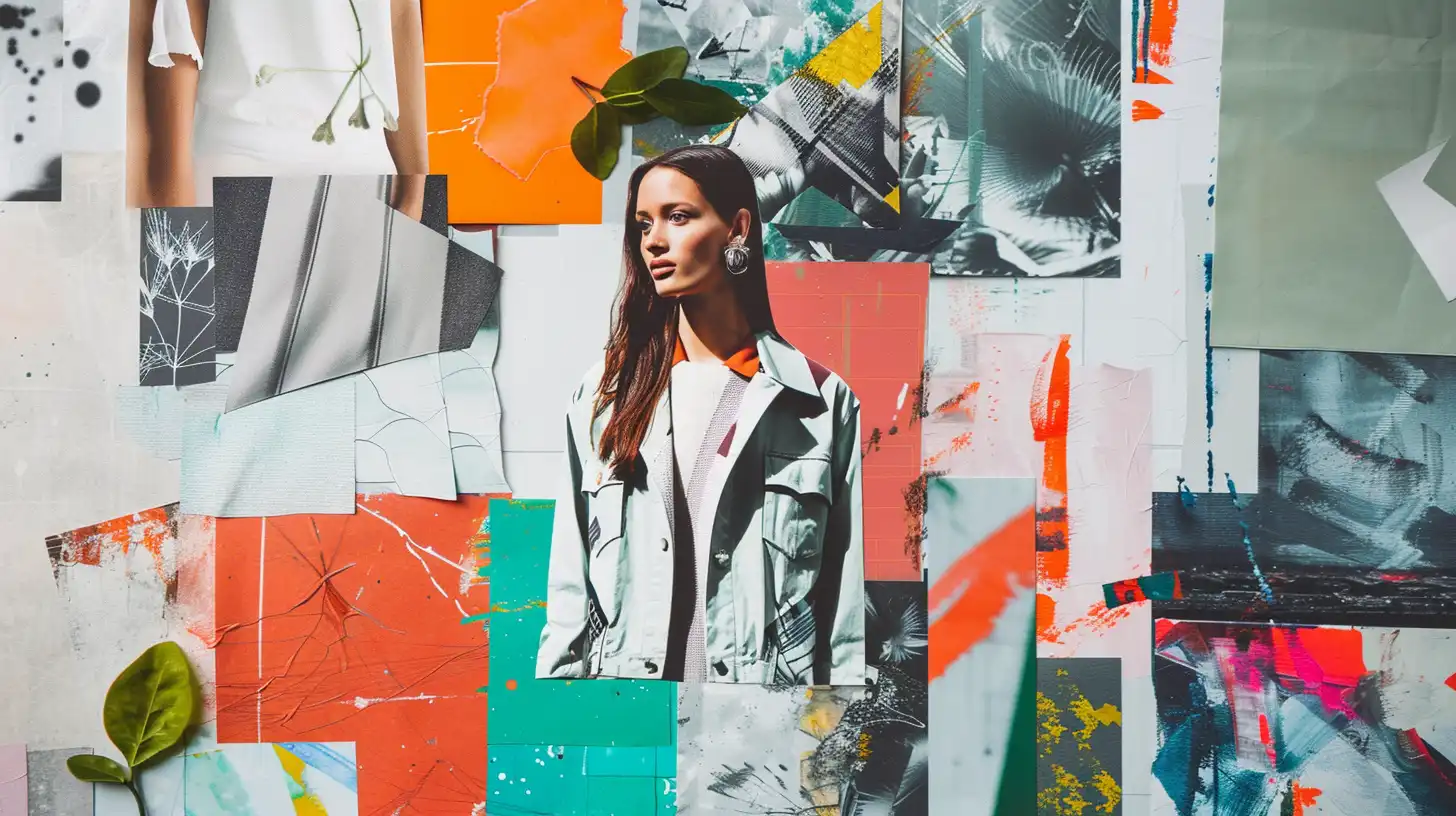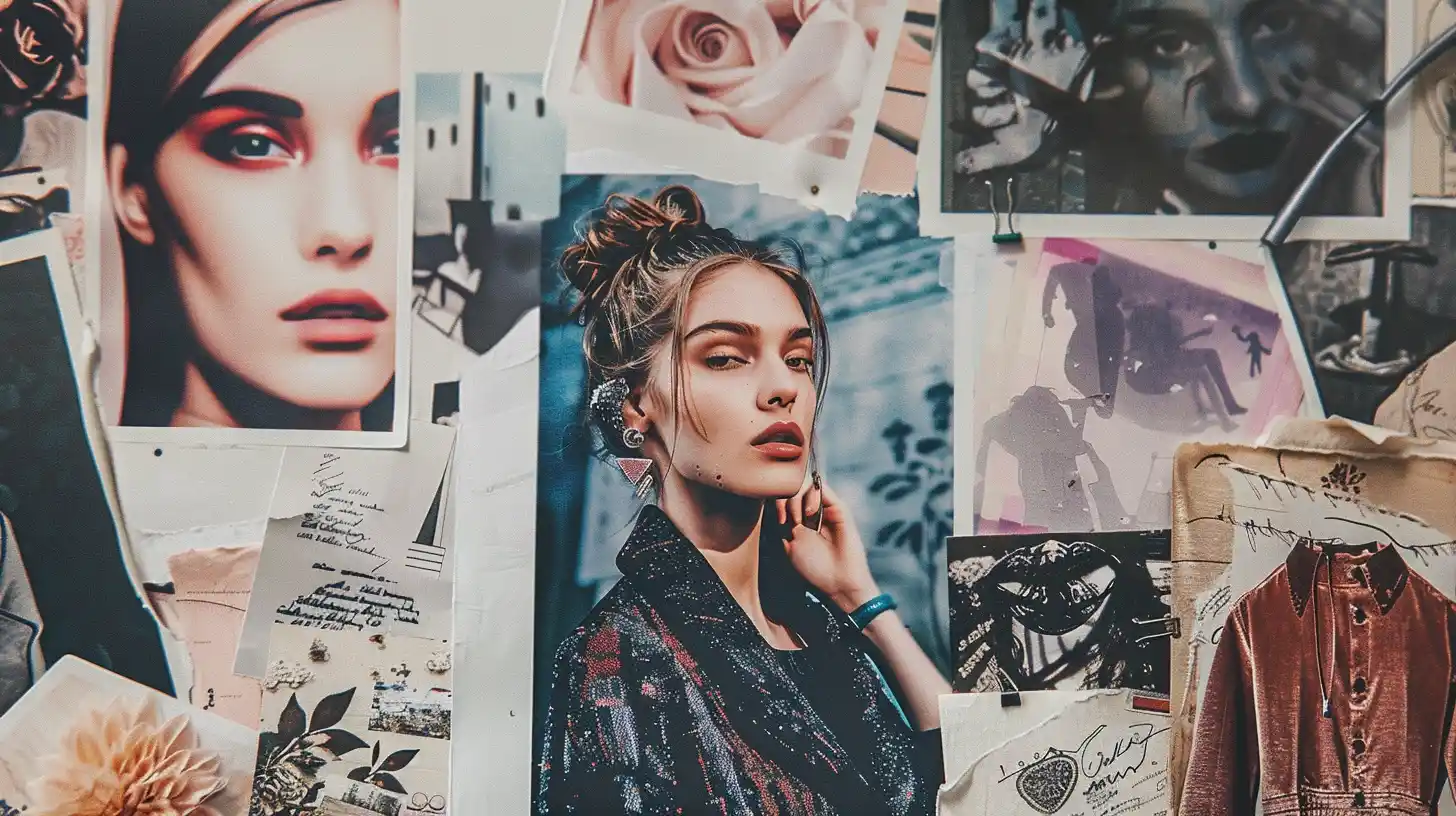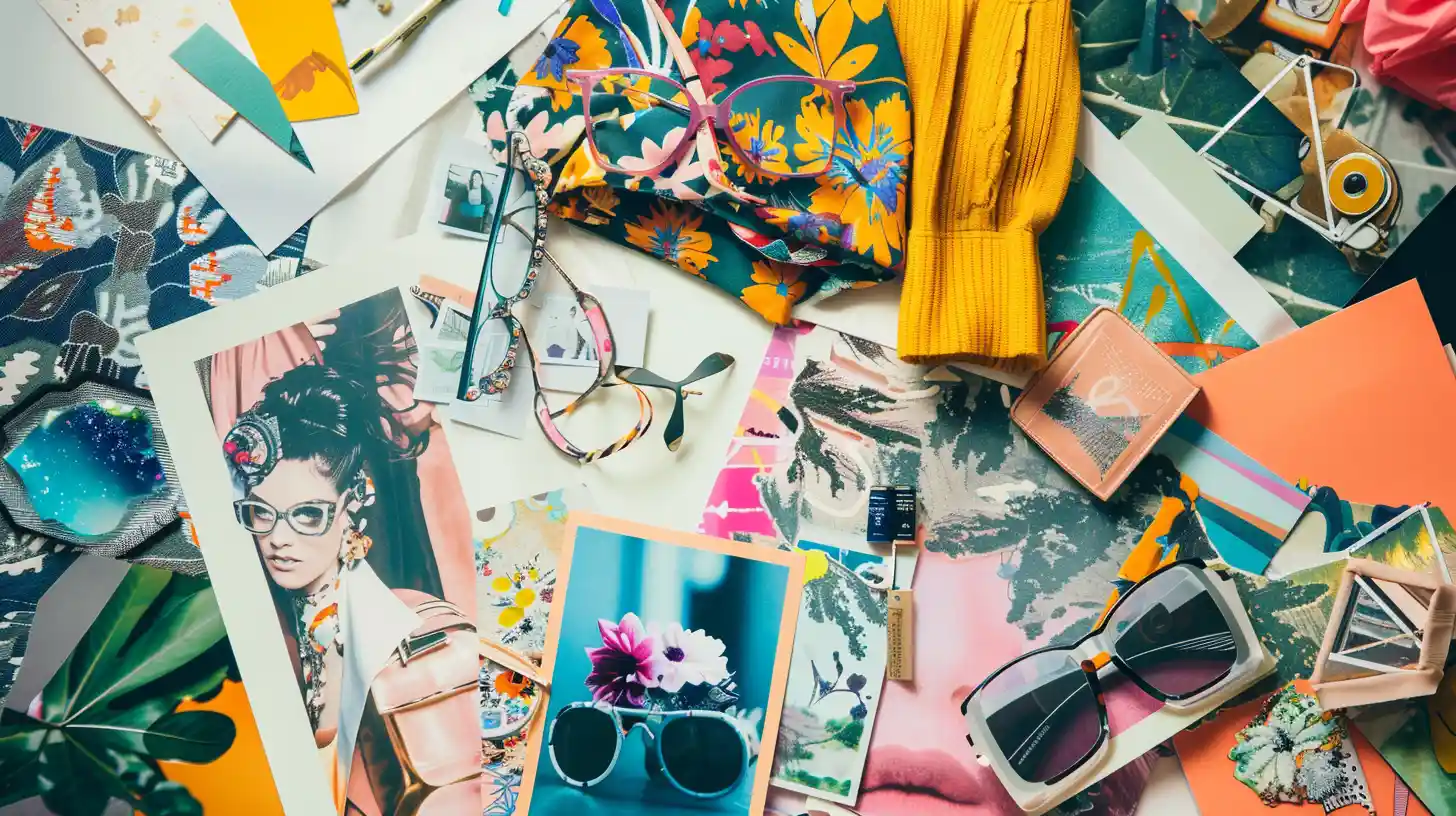
Creating a mood board for fashion is more than just picking out pretty pictures and putting them together. It's about curating a visual story that inspires, motivates, and sets the tone for your next stylish endeavor.
By carefully selecting images, textures, colors, and patterns, you can bring your creative vision to life and convey the emotions and vibe you want to capture in your designs.
In this article, we'll help you create a fashion mood board that reflects your aesthetic and fashion style. Let's dive in and unleash your inner fashionista!
Key Takeaways
- Define a clear theme to set the tone for your mood board and ensure consistency with your brand vision.
- Gather inspiration from diverse sources, including images, fabrics, and accessories.
- Select visual elements that align with your theme, and focus on layout and composition to create a visually appealing mood board.
- Experiment with different textures, colors, and materials to add depth and interest to your mood board.
- Refine and edit your mood board to ensure accuracy and consistency, and adjust as needed to achieve a cohesive look.
What is a Fashion Mood Board?

A fashion mood board is essentially a visual representation of your brand's DNA. It encapsulates the essence of your collection and guides your design process from start to finish. It's a tool that helps you stay focused on your brand values and inspiration, ensuring consistency throughout your collection.
As a visual collage, your mood board represents the concept behind your brand or collection. It influences your fashion design process and aesthetic direction. Whether physical or digital, your mood board will include images, color swatches, fabric samples, and design elements that evoke your brand's personality.
How to Create a Mood Board for Fashion

Now, it's your turn to create a fashion mood board that showcases your unique style and vision. Follow this step-by-step guide to create a unique fashion moodboard.
Step 1: Define Your Theme
Defining your theme is crucial to creating a cohesive fashion mood board. It sets the tone for your visual presentation and ensures that every element you add aligns with your brand's vision.
When defining your theme, select a central concept that aligns with your brand or collection vision to maintain focus and coherence. Consider the mood, color palette, and style elements that best represent your theme for a cohesive visual presentation.
Step 2: Gather Inspiration
As you create a fashion mood board, it's essential to search various creative outlets for inspiration. This is crucial for collecting diverse ideas that resonate with your design vision and brand concept.
You can gather inspiration from multiple sources, including magazines, websites, nature, and more. Curate unique images, material swatches, and objects that align with your design vision and brand concept. This will help you develop a clear direction for your collection.
Step 3: Select Visual Elements
Choose visual elements that evoke the essence of your fashion concept. Select high-quality images and materials that align with your design vision and brand aesthetic. Try to gather various visuals that convey your collection's mood, style, and color palette.
Incorporate fabric swatches, textures, and patterns that reflect your design direction. Accessory details, like jewelry or handbags, can also add depth to your mood board. Ensure your chosen visuals are cohesive and consistent in style to maintain a clear message.
Step 4: Layout and Composition
To create a visually appealing mood board, you'll need to carefully consider the layout and composition of your fashion concept. Balancing elements is crucial to guide the viewer's eye through your design vision.
Vary the sizes of pictures to show their importance and relevance to your design concept. Incorporate colors, fonts, and material swatches on your mood board for a balanced and visually appealing composition.
Create a comfortable visual flow on your mood board. Smoothly guide the viewer's eye from the top left to the bottom right. Group related images together to create a stronger impact and convey a cohesive message.
Step 5: Refine and Edit
This refining process involves editing out any images that don't fit your vision. Doing so lets you focus on the essential elements that convey your message.
As you edit, arrange the images in a visually appealing and balanced layout to maximize their impact.
By refining and editing your mood board, you'll ensure it communicates the inspiration behind your fashion collection.
Tools and Materials for Creating a Fashion Mood Board

As you prepare to create your fashion mood board, you'll need to decide whether you want to go digital or physical.
Physical vs. Digital Mood Boards
Physical moodboards offer a hands-on approach to creativity. They allow you to work with tactile materials like fabric swatches, magazines, and glue.
Conversely, digital moodboards provide flexibility and easy editing. This makes it simple to customize and share your board using online tools like Canva or Milanote.
Consider what materials you have available and how you prefer to work. If you enjoy a more traditional, craft-based approach, physical mood boards might be the way to go. However, digital mood boards are the way to go if you prefer a more flexible and easily shareable option.
Tools for Creating Digital Mood Boards
To create a fashion mood board, you'll need digital tools and materials.
Canva is a user-friendly platform for beginners, offering drag-and-drop functionality.
For team collaboration, Milanote is a good option. Another user-friendly platform for mood boards is Moodzer.
For color inspiration, Coolors.co generates color palettes. If you need advanced editing capabilities, Adobe Creative Suite provides essential tools, including Photoshop, Illustrator, and InDesign.
Materials for Creating Physical Mood Boards
To make a physical mood board, gather these materials: magazines for finding images, scissors for cutting out pictures, glue for sticking images, a poster board as the base, and markers for adding notes.
These tools are necessary for creating hands-on mood boards. They allow you to represent design inspiration visually and physically.
Tips for an Effective Fashion Mood Board
As you build your fashion mood board, remember that a few key strategies will make all the difference.
Keep it Cohesive
When creating a fashion mood board, it's important to use a consistent visual style that expresses a clear design vision.
To achieve this, ensure your mood board has a unified theme with matching colors, textures, and visual elements.
Select a color scheme that fits with your brand or collections. Use various images and materials that work well together to enhance the overall look. Keep the layout clean and avoid clutter to highlight each element effectively.
Experiment with Textures and Colors
Enhance your mood board by incorporating various textures and colors to evoke emotions and moods.
To achieve this, experiment with different textures like fabric swatches, lace, or sequins. Use a variety of colors, ranging from complementary to contrasting, to evoke different emotions.
Incorporate tactile elements like fur, leather, or beads to enhance the sensory experience. Mix and match different materials such as paper, fabric, and metal to create a dynamic look.
Include Multiple Visual Elements
To improve your fashion mood board, add various visual elements that reflect your style. For example, you can include fashion images, fabric swatches, textures, and accessories.
Also, consider adding art pieces, quotes, and color palettes. They'll enhance the visual storytelling aspect of your mood board.
Experiment with different layouts and arrangements to find the best way to present your ideas.
Balancing your visual elements can create a harmonious and engaging fashion mood board.
Don't Overcrowd
Avoid including every inspiring element you've gathered when creating your fashion mood board. Overcrowding can make it hard to see your vision. Instead of putting everything on your board, prioritize key elements to prevent clutter and confusion.
Instead, select images and materials thoughtfully, ensuring each contributes meaningfully to the board. Aim for a clutter-free mood board that allows each element to shine. Remember, white space is your friend. It creates a visually appealing and balanced composition.
Stay True to Your Theme
Committing to a unified theme gives your fashion mood board a clear sense of direction. This ensures every element, from images to colors, harmonizes to convey your design vision.
You need to create a cohesive message that resonates with your audience. To stay true to your theme, carefully curate your images, selecting only those that align with your concept.
Consistency is key, so make sure all elements support your theme. This will enhance the impact of your fashion mood board, making it visually appealing and effective.
Conclusion
You've created a fashion mood board that distills your inspiration into a cohesive concept. Now, use it as a guide to inform your design process and maintain consistency in your fashion collection.
Refer to it often to ensure your designs stay true to your vision. With your mood board, you can communicate your aesthetic to others, from manufacturers to marketers.
It's a powerful tool to help you bring your fashion vision to life.
Learn more fashion trends from the Longan Craft Blog, and dive into the fabric world with Longancraft!

0 comments